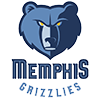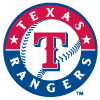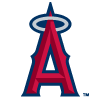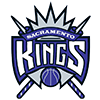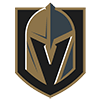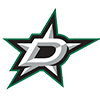Though the primary functions of fantasy sports are competition and fun, many of us play for money — and in some cases, big prizes are at stake. As such, it's imperative that we treat our teams like investments. That means keeping an open mind on players and not holding grudges. It's one thing to not target specific players in drafts and auctions because you don't believe their production will match or exceed their value. It's another thing altogether when a player who may not necessarily be on your radar becomes available via free agency and fits specific category needs. Such was the case for me with Russell Martin last week and with this week's risers, Trevor Bauer and Jimmy Nelson — two highly-touted prospects who have had unimpressive campaigns to date but are flashing some of their upside. We can pretty much expect to embark on wild and bumpy rides should we choose players with this type of profile for our squads, but we can't deny the upside and possibility of catching lightning in a bottle. If they stink, and you lose faith, you can always cut them. Keeping an open mind and being able to quickly adjust our perspective on players is crucial for success.
Every fantasy baseball season provides reminders and lessons that better prepare us for future drafts. Through nine weeks thus far, my biggest takeaway is a refresher about the importance of drafting depth at starting pitching. Losing Madison Bumgarner and Noah Syndergaard for a significant
Though the primary functions of fantasy sports are competition and fun, many of us play for money — and in some cases, big prizes are at stake. As such, it's imperative that we treat our teams like investments. That means keeping an open mind on players and not holding grudges. It's one thing to not target specific players in drafts and auctions because you don't believe their production will match or exceed their value. It's another thing altogether when a player who may not necessarily be on your radar becomes available via free agency and fits specific category needs. Such was the case for me with Russell Martin last week and with this week's risers, Trevor Bauer and Jimmy Nelson — two highly-touted prospects who have had unimpressive campaigns to date but are flashing some of their upside. We can pretty much expect to embark on wild and bumpy rides should we choose players with this type of profile for our squads, but we can't deny the upside and possibility of catching lightning in a bottle. If they stink, and you lose faith, you can always cut them. Keeping an open mind and being able to quickly adjust our perspective on players is crucial for success.
Every fantasy baseball season provides reminders and lessons that better prepare us for future drafts. Through nine weeks thus far, my biggest takeaway is a refresher about the importance of drafting depth at starting pitching. Losing Madison Bumgarner and Noah Syndergaard for a significant chunk of the season is undoubtedly a huge blow. Luckily, one of my NFBC RotoWire OC teams is doing well in pitching despite losing Thor because I made sure to build depth with starters to avoid having to stream borderline waiver-wire options. Sure, Robbie Ray is likely to regress from his early-season dominance and I may experience some additional bad luck with injured SPs. But not allowing myself to ease up on starting pitcher depth-building during the draft has kept that team competitive in the pitching categories because I'm not forcing the Joe Ross' and Chad Kuhl's of the world into my lineup simply because they have a two-start week. This season's story has yet to unfold, but a mid-season reminder about the importance of a strong pitching staff should not fall on deaf ears.
RISERS
Elvis Andrus, SS, TEX
There are probably a lot of folks awaiting the drop-off, but I don't think it's coming. A mid-round what-the-heck middle infielder selection in our drafts may end up as a common denominator among winning fantasy teams this season. No hitter in baseball had a better week than Andrus, who hit .520 in 25 at-bats along with four steals, 10 runs, seven RBI and a homer. He has been the best offensive threat on a team ripe with offense, most of whom (ie Jonathan Lucroy, Rougned Odor) have been underperforming. A consistent force with eight seasons under his belt, Andrus has never played less than 145 games in a season. He's a guy who rarely strikes out (13 percent career K rate), has averaged 30 stolen bases per season and has flashed more pop in his bat than ever before — his .189 ISO is nearly 100 points higher than his career average.
What Andrus has done this season needs to be taken seriously. Of course, most hitters are constantly working to improve their approach at the plate, but Andrus is someone who has taken a documented, aggressive approach towards this since 2015, reducing a fidgety high leg-kick and actively working to drive the ball more. Andrus is close to hitting double-digit homers for the first time in his career, and should easily hit the 30 SB mark for the first time since 2013. Hopefully he repeats last year's .300-plus average and ends the season as a top-30 fantasy player, so consider yourself lucky if you drafted Andrus simply because he fell past his ADP and you needed to fill your middle infield slot. I know I do.
Mike Zunino, C, SEA
Consider me shocked if Zunino's hot Week 9 is a sign of things to come. Since I wasn't happy with my recent addition of Martin Maldonado as a C2 fill-in for some of my 12-teamers, I decided to throw in some low bids on Zunino to perhaps catch lightning in a bottle knowing full well what the downside would be. I felt dirty doing it, but he's on a couple of my teams now. The risk, of course, is a batting average that's been so damaging (career .196 mark) that the word 'detrimental' would be understating it. The upside is that Zunino is a third-overall draft pick who has flashed prodigious power both in the minors and over the last couple seasons with the Mariners. After flailing at the plate through April, Zunino was sent down to Triple-A — a place where the magic seems to happen for so many mid-20's struggling hitters. Zunino hit .293 with five homers in 12 games and was shuttled back to the big club on May 23 where he slugged a feel-good homer, then followed that up with an 0-for-13 skid over his next four games. After a day off with the M's facing the Red Sox last Sunday, Zunino has been playing good ball (specifically, .478 with four doubles and a massive seven-RBI outing Saturday).
So of course come Sunday, his FAAB bid price is inflated, and we don't get to collect last week's stats. Those who added him should not expect a revitalized contact hitter. Sure, the 40% strikeout rate should decrease a touch, but we're still looking at a 26-year-old with massive pop who should help fantasy teams in the home-run department if he remains with the big club all season. Zunino will be hard-pressed to hit above .225 this year, which is damaging from a fantasy perspective. However, given his power upside, I'd rather roll with Zunino right now over guys like Maldonado, Christian Vazquez or any other part-time backup backstopper.
Odubel Herrera, OF, PHI
The 25-year-old former Rule-5 pick was struggling mightily heading into last week with a .211 batting average and just four stolen bases after swiping 25 in an impressive breakout 2016 campaign. The Phillies' offense had been cold as a whole and there were rumors swirling that Herrera and Maikel Franco could be demoted. Herrera hushed everyone up last week as he started to get his groove back at the plate, hitting .500 with seven RBI. Herrera continued his assault Monday with his second home run in as many days, going 3-for-5 with three runs scored. It was only a matter of time for a five-tool stud who hit .291 over his first two big league seasons. He may not reach the .290's again this season, but there is still plenty of room for BA growth through the rest of the year. Herrera is primarily a three-category contributor (R, SB, BA), and his owners would like to see a repeat on those 15 home runs from last season to truly feel good about selecting him just outside the top 100 picks in drafts.
Jimmy Nelson, SP, MIL
I've never been all that enamored with Nelson. After all, the guy takes the mound half the time in hitter-friendly Miller Park and hasn't been able to hold an ERA under 4.00 in any of his three big league seasons (career 4.25 rate). Nelson was a second-round pick back in 2010 and did have some hype surrounding him prior to his call-up to the majors for a cup of tea in 2013. He has always had a decent mix of offerings — a 93-mph fastball, knuckle-curve, changeup and a decent slider — but his primary pitch (sinker) has always been easy for opposing hitters to identify and mash. Nelson was dropped in many NFBC 12-teamers over the last couple of weeks, and I decided to take a chance on him at reasonable rates after two hard-not-to-notice outings against tough NL West offenses (21 strikeouts, no walks and just one earned run over 15 innings against the Diamondbacks and Dodgers). Right-handed bats have hit him hard this year (.359 wOBA) but the most important thing going forward is that Nelson has nearly cut his walks in half from last season (down to just six percent). Nelson is certainly streamable for the time being, lining up for another NL West club (the Giants) at home this Wednesday, followed by two starts next week at St. Louis and back home against the whiff-tastic Padres. The jury is still out on Nelson after a spotty track record, but in a season of SPs falling by the wayside, why not stick around for a bit to find out if he's for real?
Trevor Bauer, SP, CLE
After posting a career-high 14 k's against the A's last week, Bauer's 29 percent strikeout rate ranks sixth in baseball behind Sale, Scherzer, Ray, deGrom and Greinke. Also, Bauer has been much less wild, allowing more than one free pass just once in his last four starts. We're not counting Sunday's rainout-shortened outing, though. The Indians rotation has been pushed back so that unfortunately means Bauer will have to battle with Rockies bats. Bauer's 3.19 xFIP and .347 BABIP points to some obvious correction on a 5.83 ERA, but he's still been susceptible to the long ball, allowing 1.69 HR/9 after maintaining that rate around one homer per nine over his career. I won't allow myself to get reeled in, so I'll definitely pick my spots with Bauer. He's a fiery and emotional guy similar to Michael Pineda in that he can allow himself to get out of control on the mound if his head isn't in it. I'd rather have Bauer than Nelson if I was forced to choose, but acknowledge that we're still looking at a 4.00-ERA guy who can implode in any given outing. As such, we'll have to be ready to cut bait at the drop of a hat even if our ratios are in good shape.
Honorable Mentions
Jose Peraza, 2B(OF), CIN – No power (.087 ISO), miniscule walk rate (under 3% again this year), but the dude can fly and has been seeing the ball well lately. Unfortunately, there's no spot for him in the top-third of the lineup so long as Billy Hamilton is healthy and Zack Cozart is producing. You should expect an easy 30 SB minimum with a solid average in the .275 - .285 range.
Tyler Flowers, C, ATL – Has truly transformed at the plate, trading in power and a massive strikeout rate (34 percent) for contact. Over his first three seasons with the White Sox (502 at-bats), Flowers hit an almost impossible .203. Flowers' walk rate has improved over the last couple of season (nine percent), he's cut the strikeouts down (18 percent this season) and is currently hitting .346. Of course, he'll be hard-pressed to end the year at .300 – which means we should expect some struggles – but he won't be the BA killer we've grown accustomed to.
David Price, SP, BOS – Looked sharp in his second outing off the DL, striking out seven Orioles in seven innings, allowing just three hits and one walk. We should expect an incremental pitch-count increase going forward over the next few starts and he will certainly be tested with at-Yankees, at-Astros scheduled for two of his next three starts. I'd still be weary of buying given the possibility of re-aggravation of the elbow injury.
FALLERS
Brandon Drury, 2B(3B/OF), ARI
Looking at his year-to-date numbers, Drury hasn't been awful — .284 with 4 HR, 20 RBI, 18 R and a stolen base — it's just that we expected a little more. Luckily, we still have two-thirds of the season to play and enough time for Drury to out-earn his spring ADP of 225. The Diamondbacks are certainly a difference offense on the road, and that's where they spent their time last week. Chris Owings and David Peralta have struggled, as has Yasmany Tomas who has been nursing a sore groin. We're still waiting for A.J. Pollock to return, and of course Paul Goldschmidt has been, well, quintessential Goldy. Back to the man in question, Drury managed just three hits in 19 at-bats last week with zeroes across the board except for a lone RBI. He hasn't been hitting the ball hard as this year as his hard-contact has dipped from last year's 33% rate to just 28%. He is striking out at a slightly higher clip this season, his walk rate has decreased a touch from last season and his home/road splits are even more drastic than you'd expect (.389 at Chase, .183 away). Though Drury is eligible at 2B, 3B and OF, he should only be used at middle infield, and if your roster can manage it, primarily at home. Come the end of the season, 15 HR/75 RBI with a .275 average is a fair projection.
Rougned Odor, 2B, TEX
Odor is simply too good of a player for this madness to last too much longer. Odor does have eight jacks on the year, but his isolated power has taken a hard dip nearly 100 points down to .146 this season. His 34% hard-hit rate remains on par with last season's 35.4% and his low walk rate (under five percent) has remained consistent (consistently low!) despite the slight increase so far this season. The big problem with Odor is he's been of the league's biggest victims of the shift and his .229 BABIP is partially to blame for an average around the Mendoza Line. He may not reach last season's .271 average, it's hard to imagine him not adjusting and having a couple of white-hot two week stretches where he's simply mashing out of his mind. Yes, good players have down years and the game isn't always as easy as just saying every guy underperforming will rebound. But in the case of this 23-year-old monster, I'll err on the side of him bouncing back and would look to acquire him in just about every format with the exception of OBP leagues.
Rich Hill, SP, LAD
One may call it premature or emotional, but I'm chalking this one up as a loss. Come the end of the season, I may end up looking like one of those suckers who bit at his 125 ADP as my SP3 in a couple of spots knowing full well the limitations with his innings. Some of us assumed: 'hey, I'll take 18 starts with a 2.50 ERA', but reality tells us this idea was overly hopeful and short-sighted. The fact of the matter is that Hill is 37, has the world's most ominous super blister and appears to have lost his pinpoint control. Hill has yet to pitch beyond five innings in any of his six starts and has walked 13 batters over his last three. I benched Hill where I could in 12-team leagues, and now fully expect him to throw a gem against the Reds in his Friday home start. And a few gems in a row is exactly what owners in leagues that allow trades are hoping for to have any possibility of getting a decent return on their investment. You won't get preseason Rich Hill value, but you should consider other underperforming arms like Jose Quintana and Matt Moore in return, if a league mate is willing to pull that trigger. I don't think Hill makes it through the season.
Aaron Nola, SP, PHI
I didn't draft any Nola shares for no specific reason other than liking other starting pitchers in his range and purposely targeting pitchers on teams I projected to finish the year over .500 (okay, I guess those are specific reasons). Nola is only 24 years old and I'm certain he has a bright future, but injuries have certainly been a detriment to his young career. Most recently, Nola missed almost a full month with a lower back strain and has made three starts since (one good outing and two bad ones). His eight percent walk rate is a bit higher than we're accustomed to and his strikeout rate has dipped down from 25% last season to 21% this season. Nola looks to right his ship with road starts against the Braves and Cardinals. We will likely see positive regression with the former first-rounder's 5.06 ERA to somewhere in the 3.50–4.00 range, which means we should see a nice stretch of games from him this summer. The key for Nola, as cliché as it sounds, will be staying healthy.











